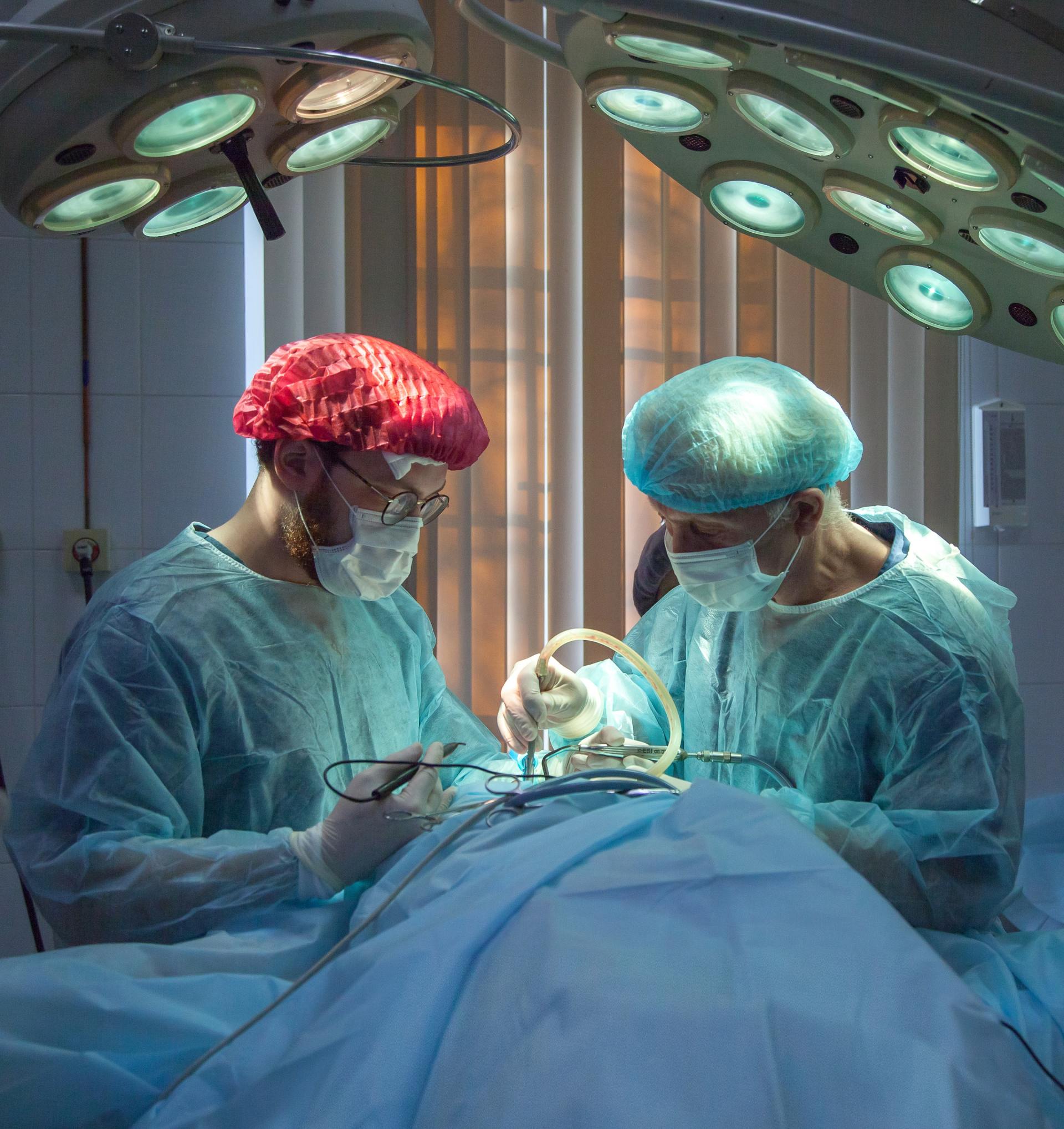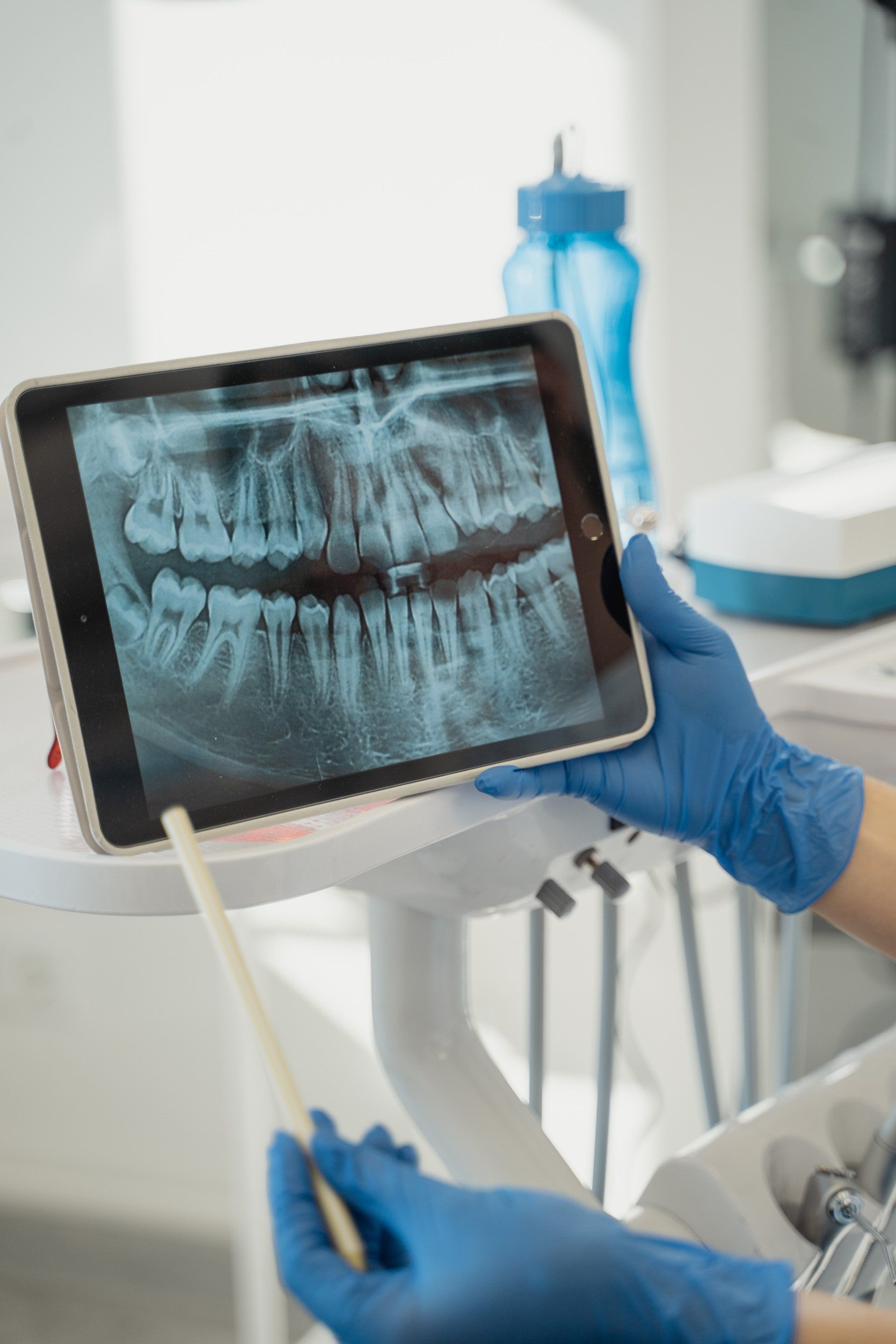Approach to preparing for a biological attack
Veronika Valdova • January 20, 2020
Approach to preparing for a biological attack
June 2017
Hospital risk management series
The debate on critical issues in science, health, and security encompasses many controversies and ethical challenges. The difference between a naturally occurring outbreak and criminal act of bioterrorism is often challenging to establish, and emergencies have to be handled as they come, regardless of the origin of the incident. The post-incident forensic analysis may or may not offer satisfactory answers in regards to attribution, liability, and the responsibility for compensation. The underlying issue for all ethical concerns examined in this work is the balance between individual rights and the needs of public health systems to protect others.
The Director of National Intelligence James R Clapper in his Worldwide Threat Assessment of the U.S. Intelligence Community provided to the Senate Armed Services Committee (2016) highlighted the danger posed by infectious diseases and their ability to cross-national and regional boundaries due to globalization and increases in human-animal interactions resulting from population growth and expansion of human settlements. Increasingly globalized medical supply chains vulnerable to disruption and uncoordinated international response compound the issue. At the hospital level, networked medical devices, electronic health records, and other facets of hospital information systems increasingly affect patient outcomes. At the same time, healthcare infrastructure became an attractive target for large-scale data theft for both economic fraud and espionage (Clapper, 2016).
In 2015, the Blue Ribbon Study Panel released a report with the assessment of gaps in the U.S. biodefense as outlined in the Homeland Security Presidential Directive No. 10 (HSPD-10) and provided 33 recommendations how to improve the status quo. The key points stressed in the report relate to the importance of centralized leadership entrusted in the office of the Vice President of the United States, the creation of a Biodefense Council and a National Biodefense Strategy, and the ability to improve attribution capability as a condition of successful deterrence. The integration of animal and human health addresses the fact that many dangerous infections are zoonoses, and the appreciation for the interaction between environmental, animal, and human health needs to come from the top leadership. Numerous biological crises already affected the nation due to a combination of increasingly sophisticated threats, vulnerabilities in the system itself, and adverse consequences that increase the overall risk. Recommendations span all aspects of biodefense. The topics range from a notification system on animal health to the funding of essential programs to biosurveillance capability, medical countermeasures and environmental decontamination (Blue Ribbon Study Panel on Biodefense, 2015).
In a follow-up report from 2016, the Blue Ribbon Panel stressed that the consequences of a biological attack would be worse than chemical or radiological. The authors mentioned documented efforts of terrorist organizations such as al-Qaeda and the Islamic State of Iraq and Levant (ISIL) to acquire biological weapons, precisely ISIL plan to contaminate water supplies in Turkey with Francisella tularensis. However, a terrorist attack is not the only concern; accidents, accidental releases of deadly pathogens, and institutional failures may be another source of dangerous pathogens. A year later, the Blue Ribbon Study Panel found out that of the 46 items mentioned in the recommendations section, only two were completed, and some progress was made in just 17 (Blue Ribbon Study Panel on Biodefense, 2016).
The U.S. discontinued the biological warfare program in 1959. Some other countries, however, still keep their stockpiles and recruit experts. Dr. Parker, former commander of the U.S. Army Medical Research Institute of Infectious Diseases (USAMRID), stressed the importance of rapid diagnostics, reliable detection and situational awareness to be embedded in the new National Biodefense Strategy. While past concerns related to al-Qaeda’s attempts to weaponized anthrax, this could hardly compare to the current efforts of ISIL that are far more sophisticated due to better funding and access to educated people. While the traditional biological warfare agents are still relevant, the possibilities expanded considerably due to biotechnology and genomics, and the protection of this critical information is essential (House of Representatives 114th Congress 2nd Session, 2016).
Background
The rapid evolution of information systems in healthcare, cross networking of patient records and medical devices with information support functions affect patient outcomes in ways never before imagined. The large-scale theft of healthcare data poses a unique risk to the infrastructure and the patients (Clapper, 2016).
Information protection
The Blue Ribbon Panel on Biodefense recommends the hardening of cybersecurity to protect pathogen data and biotechnology information from cyber-attacks. Biological information can be hazardous in the wrong hands, as the gene-sequencing technology is becoming more accessible. Additional recommendations include the creation of platforms for sharing information on cyber-threats within the advanced biotechnology communities. The highest-risk platforms involve data sharing in unsecured clouds and poorly secured data centers, especially in academia. Particularly risky is the utilization of big data analytics technologies in life sciences and networks that contain information on pathogen knowledge, and information on genetic sequences of pathogens and select agents. Such databases then become attractive targets for hackers. The threat of data compromise needs to become a factor when awarding funding for research in biodefense (Blue Ribbon Study Panel on Biodefense, 2015).
In 2015, the biggest U.S. health insurance provider Anthem, Inc suffered a massive data breach that affected 78.8 million patients. The hack was linked to Chinese group Black Vine that is known for its ties to the Chinese government. Cyber-security firm Symantec in their postmortem of the incident, concluded that the motivation was not financial but most likely espionage. However, it is not entirely clear what kind of information were the hackers looking for. Some suggested that the stolen data can be used in HUMINT operations later on (HIPAA Journal, 2015).
A data breach of the Office of Personnel Management (OPM) resulted in the compromise of records of federal employees and sensitive data from clearance forms. According to iSight Partners Inc., there was a link between the OPM breach and the health insurers’ hacks (HIPAA Journal, 2015). The incidents were, in fact, two. The first cyber-attack compromised the data of 4.2 million of past and current federal employees. A separate attack resulted in the breach of the database of background investigations submitted by 21.5 million individuals who submitted their e-QIP forms when applying for a security clearance. The potential use of this data, apart from financial cybercrime, includes theft and espionage. While economic crime is pursued through the criminal justice system, the response to state-sponsored hacker groups involves diplomatic and military means. The OPM breach fell into the category of espionage rather than commercial activity (Finklea, Christensen, Fischer, Lawrence & Theohary, 2015).
Chinese economy relies heavily on stolen intellectual property. Many industries are targeted by the Chinese state and contracted hackers, from defense and academic research to manufacturing, satellite communications, and healthcare. The U.S. economy is exceptionally dependent on knowledge and intellectual property as the most relevant driver of investment into new technologies. American healthcare became one of the prime targets of Chinese hackers. The group that was responsible for hacking multiple insurers such as Anthem, VAE, BlueCross/Blue Shield and Carefirst, as well as the OPM hacks, is nicknamed Deep Panda, or APT 19, Shell Crew, Black Vine or Kung Fu Kitten (Scott & Spaniel, 2017).
Dual-use of biotechnology
The risk of occurrence of potentially harmful biological agents or products, intentionally or not, increases with the advancing research in genome editing and affordability of the technology. While the editing of human germline remains a significant challenge for scientists, the creation of recombinant microorganisms and their synthesis de novo is a realistic possibility (Clapper, 2016).
The development of the Ebola vaccine was a remarkable achievement; however, success may not be universal. Medical Countermeasures (MCMs), just like tropical diseases, are a small market segment where significant investment is required to produce substantial innovation and corresponding results. The MCM research and development function is very risk-averse and concentrated in small biotechnology firms that have difficulty accessing contracts within the DOD that are not designed for small businesses. To address the issue, the National Biodefense Strategy needs to plan for periods between epidemics and such as the national stockpile and not just for crises (House of Representatives 114th Congress 2nd Session, 2016).
The Blue Ribbon Panel recommends greater sharing of information on threats, vulnerabilities, and potential consequences with state and local administration, strengthening of the Joint Counterterrorism Assessment Team (JCAT), and strengthening of the ability of police units to respond to biological incidents at a local level. The Intelligence Community declassified some of their findings to be able to share them more effectively with their partners in the administration at state, local, territorial, and tribal levels. However, institutional prohibitions are still hard to overcome and often prevent information sharing with emergency services. Also, fusion centers shall be established to collect and collate information on biological threats from all relevant sources and share it appropriately (Blue Ribbon Study Panel on Biodefense, 2015).
Making sense of data
China is currently the leading power in genome sequencing. In 2010, Shenzen firm, with its 128 sequencers, had more than 50% of the total global sequencing capacity. With the introduction of BGISEC-500, the cost of sequencing the full human genome dropped from $1.000 in 2010 to close to $200 today. The current share of Chinese sequencers is about 20-30% of world capacity with a plan to sequence 1.000.000 human genomes in the near future, followed by the USA (1.000.000 genomes and the U.K. with 100.000 genomes. Chinese National Genebank houses data on animals, humans, microbes, and plants. Unlike American firms, Chinese industry can rely on reimbursement from the Chinese health insurance in the future. (Cyranoski, 2016).
Significant computer power is necessary to make sense of information produced in the life science and biotechnology sectors. According to Top 500, China remains No. 1 on the list of the world’s most powerful supercomputers. Chinese Sunway TaihuLight that is located in National Supercomputing Center in Wuxi, ranks No. 1 and Tianhe-2, also called MilkyWay-2, situated in the National Supercomputing Center in Guangzhou, ranks No. 2. With a total number of 167 supercomputers, China also has the highest number of supercomputing systems in the world, ahead of the U.S. that has 165 and ranks No. 2. U.S. supercomputing systems Titan, Sequoia, Mira, and Trinity, rank No. 3, 4, 6, and 7 (Top 500, 2017). In the U.S., the private sector is primarily responsible for the production and protection of valuable data it produces. However, in the face of advanced persistent threats sponsored by state actors, this is not a leveled field.
Position –Tread lightly on civil rights
The debate on biodefense encompasses numerous ethical challenges and controversies. These dilemmas can be reduced to one simple overarching theme: how far shall we go in the pursuit of public health when the interests of the community and the individual collide? What dod we do in situations of public health emergencies when individual citizens and private entities refuse to comply with the presented good ideas voluntarily and challenge them as unconstitutional?
In August 2016, the Center for Disease Control and Prevention proposed a rule that would make it easier to deal with public health emergencies, and allow the agency to perform screening and testing, and to quarantine travelers. Lawyers and health organizations, but also other professionals such as epidemiologists, raised concerns about the rule’s disregard for due process and informed consent, lack of time limitation for detention, and the absence of the right to a legal counsel. A similar effort in 2005 failed due to overwhelming rejection by the public (Yong, 2017).
The debate about federal powers to interfere with civil liberties during public emergencies needs to strengthen the ability of the U.S. to counter any biological threats without scarifying civil rights in the process. During the Ebola outbreak, the CDC extensively monitored more than 30.000 travelers and barred them from any public places for three weeks, including public transport, shopping malls, and the workplace. None of them was infected. Hodge et al. (2017) argue that any measures implemented have to meet the standard of effectiveness, especially when it comes to isolation, quarantine, screening, monitoring, travel restrictions, and treatment, minimum restriction of civil liberties, and be acceptable to the public. The agency also should be able to prove that any failure to comply increases the risk to others. The main challenges of such broad-sweeping rules are the right to due process and informed consent (Hodge, Gostin, Parmet, Nuzzo & Phelan, 2017).
When it comes to emerging infections, the science that supports the diagnostic screening tests, vaccination schedules, prophylactic, and therapeutic measures is likely to be less than definitive. Gaps in knowledge result in significant ambiguity about safety, the efficacy of measures implemented, and the effect on the probability of disease transmission. This uncertainty means that, to a large degree, many diagnostic, prophylactic, and therapeutic interventions will be experimental. While the Food and Drug Administration (FDA) allows the use of certain unapproved products in the case of public health emergencies or on compassionate grounds, there is no obligation to submit to an experimental treatment.
The capability to attribute an attack or accidental release to its source is a significant deterrent and a driver of implementation of security improvements at facilities that handle dangerous pathogens. For the victims, attribution can pave the way to eventual compensation in civil liability and mass tort claims. Microbial forensics is a new scientific discipline that may allow tracking of a biological agent directly to its source. The Middle East and the North African region experienced numerous biological threats in the past decade, specifically H1N1, MERS-CoV, and the use of ricin. However, due to gaps in knowledge, it is easy to misinterpret microbial forensics evidence as to both a false positive and a false negative (Bidwell & Murch, 2016).
Attribution capability needs to include both scientific and legal components of proof, and be understandable to the public at large. The Daubert standard of evidence (Daubert v. Merrell Dow Pharmaceuticals) stands that evidence presented in court needs to be “relevant and rest on a reliable foundation.” This standard means that the theory or technique has to be tested, and subject to peer review and publication, must have known potential error rate operational standards have to exist and must be widely accepted in the scientific community. The evidence may not always be admissible in common and civil law, under Islamic law or in front of international tribunals. Solid proof is required for the U.S. Government to be able to persuade other nations to join military action, impose sanctions, or take a domestic regulatory action. To conform with the Daubert standard, and to become a useful policy tool, microbial forensics needs to overcome general suspicions and unrealistic expectations. The perception of the method suffered due to wrong accusations made in the 2001 Amerithrax and 2015 Mississippi cases. A review of 156 wrongful convictions all over the United States showed that 60% of these cases involved invalid forensic testimony coming from 52 forensic labs in 25 states (Bidwell & Bhatt, 2016).
This ambiguity may make it impossible to attribute a biological incident to a malicious actor or a specific facility responsible for its accidental release. The difference between a naturally occurring outbreak and criminal act of bioterrorism is likely to be uncertain. As a result, the grounds for public health emergency may become very shaky if the original narrative proves to be incorrect. The post-incident forensic analysis may or may not offer satisfactory answers in regards to attribution, liability, and the responsibility for compensation. Compulsory sharing of information that may be abused is yet another issue that deserves careful consideration. Draconian measures based on a narrative that does not pass scientific and legal scrutiny will likely backfire and further erode public trust.
Counter-Position: Public health approach
When it comes to potentially deadly infections, individual rights end where other people’s rights begin. The acceptance of screening, prophylactic measures, and treatment at the cost of a minor personal inconvenience does not need to be questioned as “too much to ask.”
Relevant recommendations by the Blue Ribbon Study Panel regarding the last mile MCM delivery to patients in need include the need for adequate funding of Public Health Emergency Preparedness functions, a comprehensive Hospital Preparedness Program, and the preparation of Clinical Infection Control Guidelines and related training (Blue Ribbon Study Panel on Biodefense, 2015).
The threat of biological attacks (anthrax), criminal attacks (ricin), and natural outbreaks such as multidrug-resistant bacteria, Ebola, Zika, H1N1, avian influenza, and re-emerging diseases overlap. The threat is coming from international terrorist organizations such as al-Qaeda and ISIL, homegrown terrorists, rogue states, effects of climate change, and global connectivity, but also from technological advances in synthetic biology and gene editing. The BioWatch Program, implemented by the Office of Health Affairs (OHA) and the Science and Technology Directorate (S&T) of the Department of Homeland Security (DHS), is an early warning program against aerosolized biological attack (Department of Homeland Security, 2016). The program came under scrutiny by the Government Accountability Office (GAO) due to planned upgrades from Gen-2 to Gen-3. The GAO reviewed the technological capabilities of the Gen-2 system as it is currently deployed, the testing of the Gen-3 system, and the option of autonomous detection of biological threats that could eventually replace BioWatch. GAO concluded that the DHS lacks a reliable assessment of the Gen-2 system that would allow it to make an informed decision on its cost-effectiveness. While the Gen-2 system needs to be manually administered, the Gen-3 collects airborne particles autonomously and sends the results automatically. False positives remain a concern, however (U.S. Government Accountability Office, 2015). The stated example shows that there are controls in place that keep the government’s intrusions into people’s lives in check and that no error of judgment within the administration goes unpunished.
Interagency body Public Health Emergency Medical Countermeasures Enterprise (PHEMCE) comprises a list of agencies such as CDC, NIH, FDA, VA, DOD, DHS and USDA and coordinates the development, acquisition, stockpiling and use of MCMs. Its strategic implementation plan (SIP) implements the requirements stated in the Public Health Service Act (Section 2811d) as amended by the Pandemic and All-Hazards Preparedness Reauthorization Act. MCMs provided through PHEMCE are made available to the public as the need arises. Special attention is paid to vulnerable populations such as children and pregnant women (U.S. Department of Health and Human Services, 2017). It is the responsibility of PHEMCE to ensure the ability to deliver MCMs held in the National Strategic Stockpile to the patients who need them should a crisis occur (U.S. Department of Health and Human Services, Office of the Assistant Secretary for Preparedness and Response & Public Health Emergency Medical Countermeasures Enterprise, 2016).
Conclusions/Recommendations
A balanced approach is essential when asking individuals to comply with any public health measures that are supposed to protect them, with their consent or not, and people around them. Any public health emergency that requires significant cooperation from the public needs to be based on information that is true when it comes to the origin and nature of the threat. The ability to attribute confidently attacks and accidental releases to the source is essential for the formulation of an appropriate response. Any restrictions that are imposed on the public need to be based on rigorous risk assessment and rooted in sound science. Such restrictions have to be proportionate, appropriate, and acceptable for the public. After all, the condition of a legitimate government is the consent of the governed. Because of the experimental nature of many new treatments for emergency use, great caution needs to be exercised when obtaining or waving consent, as appropriate and relevant. Due process and third party review need to be part of the emergency isolation process to maintain general public approval of the measures implemented.
References
Bidwell, C., & Bhatt, K. (2016). Use of Attribution and Forensic Science in Addressing Biological Weapon Threats: A Multi - Faceted Study A special report published by the Federation of American Scientists. federation of American Scientists. Retrieved from https://fas.org/wp-content/uploads/2016/03/bioattribution-nps-report-3-14.pdf
Bidwell, C., & Murch, R. (2016). Use of Microbial Forensics in the Middle East/North Africa Region An analysis prepared for the Department of State Bureau of Arms Control and Verification. Federation of American Scientists. Retrieved from https://fas.org/wp-content/uploads/2016/03/Vfund-DoS-paper_finaldraft.pdf
Blue Ribbon Study Panel on Biodefense. (2015). A National Blueprint for Biodefense: Leadership and Major Reform Needed to Optimize Efforts – Bipartisan Report of the Blue Ribbon Study Panel on Biodefense.. Washington, DC: Hudson Institute. Retrieved from https://s3.amazonaws.com/media.hudson.org/20151028ANATIONALBLUEPRINTFORBIODEFENSE.pdf
Blue Ribbon Study Panel on Biodefense. (2016). Biodefense Indicators: One Year Later, Events Outpacing Efforts to Defend the Nation. Arlington, VA. Retrieved from www.biodefensestudy.org/LiteratureRetrieve.aspx?ID=144256
Clapper, J. (2016). Statement for the Record Worldwide Threat Assessment of the US Intelligence Community Senate Armed Services Committee. The U.S. Senate. Retrieved from https://www.armed-services.senate.gov/imo/media/doc/Clapper_02-09-16.pdf
Cyranoski, D. (2016). China’s bid to be a DNA superpower. Nature, 534(7608), 462-463. http://dx.doi.org/10.1038/534462a
Department of Homeland Security. (2016). Written testimony of OHA and S&T for a House Homeland Security Subcommittee on Emergency Preparedness, Response & Communications hearing titled “Improving the Department of Homeland Security’s Biological Detection and Surveillance Programs” | Homeland Security. Dhs.gov. Retrieved 10 June 2017, from https://www.dhs.gov/news/2016/02/11/written-testimony-oha-and-st-house-homeland-security-subcommittee-emergency
Finklea, K., Christensen, M., Fischer, E., Lawrence, S., & Theohary, C. (2015). Cyber Intrusion into U.S. Office of Personnel Management: In Brief. Washington D.C.: Congressional Research Service. Retrieved from https://fas.org/sgp/crs/natsec/R44111.pdf
HIPAA Journal. (2015). Hackers Stole Anthem Data for Espionage; Not Fraud. HIPAA Journal. Retrieved 11 June 2017, from http://www.hipaajournal.com/hackers-stole-anthem-data-for-espionage-not-fraud-8053/
HIPAA Journal. (2015). OPM 4M-Record Data Theft Linked to Recent HIPAA Data Breaches. HIPAA Journal. Retrieved 11 June 2017, from http://www.hipaajournal.com/opm-4m-record-data-theft-linked-to-recent-hipaa-data-breaches-7054/
Hodge, J., Gostin, L., Parmet, W., Nuzzo, J., & Phelan, A. (2017). Federal Powers to Control Communicable Conditions: Call for Reforms to Assure National Preparedness and Promote Global Security. Health Security, 15(1), 123-126. http://dx.doi.org/10.1089/hs.2016.0114
House of Representatives 114th Congress 2nd session. (2016). Outside views on biodefense for the Department of Defense hearing before the Subcommittee on emerging threats and capabilities of the Committee on Armed Services. Washington, D.C.: U.S. Government Printing Office. Retrieved from https://www.hsdl.org/?view&did=797147
Scott, J., & Spaniel, D. (2017). China's Espionage Dynasty: Economic Death by a Thousand Cuts. Institute for Critical Infrastructure Technology. Retrieved from http://icitech.org/icit-brief-chinas-espionage-dynasty-economic-death-by-a-thousand-cuts/
Top 500. (2017). June 2016 | TOP500 Supercomputer Sites. Top500.org. Retrieved 11 June 2017, from https://www.top500.org/lists/2016/06/
U.S. Government Accountability Office. (2015). Biosurveillance DHS Should Not Pursue BioWatch Upgrades or Enhancements Until System Capabilities Are Established. U.S. Government Accountability Office. Retrieved 10 June 2017, from http://www.gao.gov/products/GAO-16-99
U.S. Department of Health and Human Services. (2017). 2016 Public Health Emergency Medical Countermeasures Enterprise (PHEMCE) Strategy and Implementation Plan. U.S. Department of Health and Human Services. Retrieved from https://www.phe.gov/Preparedness/mcm/phemce/Documents/2016-phemce-sip.pdf
U.S. Department of Health and Human Services, Office of the Assistant Secretary for Preparedness and Response, & Public Health Emergency Medical Countermeasures Enterprise. (2016). 2016 Public Health Emergency Medical Countermeasures Enterprise Stakeholders Workshop Report. Bethesda, MD: U.S. Department of Health and Human Services. Retrieved from https://www.phe.gov/Preparedness/mcm/phemce/PHEMCEworkshop/Documents/phemce-stkhldr-wkshp-rpt.pdf
U.S. Department of Health and Human Services, & U.S. Department of Agriculture. (2016). Annual Report of the Federal Select Agent Program. U.S. Department of Health and Human Services. Retrieved from https://www.selectagents.gov/resources/FSAP_Annual_Report_2015.pdf
Yong, E. (2017). The CDC’s New Quarantine Rule Could Violate Civil Liberties. The Atlantic. Retrieved 12 June 2017, from https://www.theatlantic.com/science/archive/2016/12/cdc-quarantine-rule-violate-civil-liberties/511823/

Nařízení (EU) 2017/745 o zdravotnických prostředcích vstoupilo v platnost 26. května 2021. Platnost certifikátů vydaných podle stávajících směrnic vyprší nejpozději 24. května. Toto je třeba provést ve lhůtě, která odpovídá době nezbytné pro přezkoumání dokumentace a před vypršením platnosti současných certifikací. Česká republika stále nemá svůj oznámený subjekt. Jakmile dojde k akreditaci, bude ITC zavalen ohromným počtem nevyřízených podání v českém jazyce. Zajisdtěte si pomoc s podáním od týmu Arete-Zoe, který má s přípravou klinické dokumentace dle MDR bohaté zkušenosti.

The reduction of Czech-based Notified Bodies (NBs) leaves only one still pending accreditation and one in Slovakia that does accept submissions in Czech. The delay in accreditation has produced a significant backlog for submissions pending review and acceptance. The complexity of MDR is more stringent both for the preparers and the reviewers at the NB. This situation introduces many vulnerabilities into the submission process and represents substantial risk that can and should be minimized! The potential consequences of certification delays may be critical for some manufacturers. Is the cost penalty from delay because of necessary revision or rejection worth the minor economy of an in-house effort? Get your staff an assessment from a team with proven MDR success! Contact Arete-Zoe for a courtesy review of your situation and secure assistance that will reduce your risk! Stay agile, competitive, and profitable! What is the current situation? Regulation (EU) 2017/745 on medical devices (the Medical Device Regulation, MDR), which was adopted in April 2017, became applicable in the European Union on 26 May 2021, after a year delay due to Covid [i] . The certificates issued under the existing Directives for medical devices ( 93/42/EEC and 90/385/EEC ) will expire on or before May 24th, 2024. By then, all manufacturers who wish to keep their products on the market as medical devices, will have to upgrade their documents to the new standards. Previous documentation standards fall far short to the new requirements, placing significant burden on both the manufacturers and reviewers at the NB. Many previous submissions under MDR have been rejected based on documentation shortfalls within any of the many sections. When considered with the significant backlog, any aspect of documentation that requires revision only compounds certification delay and may jeopardize market access for many medical devices. All this needs to be done within a period that accounts for the time necessary for review prior to expiration of current certifications. Additionally, there is a significant bottleneck in submission processing due to the limited capacity of NBs in the EU due to a reduction in the number of designated NBs, increased number of products that are subject to review by NB due to reclassification, and increased complexity of MDR submissions compared to MDD/AIMD. The Czech Republic still does not have its own designated NB. Once accreditation occurs, the backlog of Czech language submissions will be overwhelming. The high number of returns and requests for amendments and revisions shall be expected in the initial months, slowing the process further for all. By May 2024, many manufacturers will find themselves in a situation when their products will no longer be marketable in the EU due to expired certificates and face additional consequences from having products purged from supply chain. Discussion MDR is here to stay. Czech Minister of Health MUDr. Vlastimil Válek in his introductory statement at the October 2022 AVDZP Conference [ii] stated that another postponement of MDR is out of question. While it is not in the interest of the European Union to be dominated by non-EU manufacturers, primarily from Asia, it is unlikely that the existing Regulation will be substantially changed to accommodate manufacturers’ concerns. Válek also reminded the public that the Wild East mentality with improvised devices throughout the hospital system that dominated the Czech market in the 1990s is gone and will not return. In short, MDR is a reality to which manufacturers will have to adjust. Notified bodies available to Czech manufacturers under MDR The number of EU NBs that are designated under MDR has increased to 34, half of which are located in Italy (9) and Germany (8). The remaining 17 are in Belgium (1), Croatia (1), Finland (2), France (1), Hungary (1), Ireland (1), the Netherlands (3), Norway (1), Poland (2), Slovakia (1), Slovenia (1), Spain (1) and Sweden (1) [iii] . European manufacturers can pursue certification of their products with any EU NB, with limitations to the type of product and the capacity and willingness of NBs to take on new clients. However, for access to the greatest number of NBs, the submission should be in English. Two Czech NBs were designated in Czechia under the 93/42/EEC (MDD): Institut pro testování a certifikaci, a.s. (ITC) and Elektrotechnický Zkušební Ústav, s.p. (EZÚ). Only one of them, ITC, is in the process for designation under MDR. However, the final scope of MDR codes ITC will be able to process has not been released. One additional institution, Czech Metrological Institute (CMI) is pursuing designation under MDR without prior history in medical devices under MDD or AIMD. The anticipated accreditation will take an additional year. Institut pro testování a certifikaci, a.s. (ITC), Czech Republic ITC’s current designations include Regulation (EU) 2016/425 Personal protective equipment, 2014/68/EU Pressure equipment, 2009/48/EC Safety of toys, Regulation (EU) No 305/2011 - Construction products and 2014/30/EU Electromagnetic compatibility. Designations under 93/42/EEC Medical devices and 98/79/EC In vitro diagnostic medical devices expired in May 2021 (MDD) and May 2022 (IVDD) [iv] . ITC will continue to perform audits under MDD during the transitional period until May 24, 2024. ITC submitted their application for designation under MDR on December 30, 2019. The Designating authority (ÚNMZ) verified completeness of the application and forwarded it to the European Commission in November 2020. The Commission designated the Joint Assessment Team in December 2020, which completed the evaluated in March 2021. On-site Joint Assessment was completed in June 2021. The official JAT report was issued in September 2021. ITC implemented CAPAs in fall 2021. In June 2022, designating authority ÚNMZ completed their review of CAPAs implemented by ITC and submitted it to the Joint Assessment Team for approval. In August 2022, ÚNMZ issued the final report. In September 2022, JAT issued its final assessment and a in October 23022, ITC underwent MDCG review and is now awaiting MDCG opinion that the notification can be accepted. The expectation is that ITC should be listed in the NANDO database by January 2023 for MDR [v] . According to Mgr. Jiří Heš, ITC will primarily serve Czech manufacturers who already are their clients and have certificates issued by them under MDD. New certificates under MDR won’t be issued in time and there will inevitably be a gap in coverage of products with valid MDD certification. [vi] ITC only began preparing application for designation under IVDR. Due to the extensive backlog of MDR certificates, it is reasonable to expect that the process of designation under IVDR will not be any faster. ITC currently does not offer any training on MDR for manufacturers or guidance on how to prepare submissions. The most significant thing any manufacturer can do for themselves is to ensure their submission is as appropriate as possible the first time. But they are left to their own means to sort out the transition from MDD to MDR. Without specific guidance from ITC on their expectations, there is significant risk from the ambiguity of the MDR Regulation itself. However, this risk can be reduced from experience from submissions under MDR to other NBs which will provide reasonable opportunity for a successful submission. Elektrotechnický Zkušební Ústav, s.p. (EZÚ), Czech Republic EZÚ’s current designations include Regulation (EU) No 305/2011 - Construction products and 2014/30/EU Electromagnetic compatibility. EZÚ won’t pursue designation under MDR. The activities EZÚ will continue include audit under MDD during the transitional period for 42 manufacturers whose certificates they serve, certification of quality management systems, and electrical safety. EZÚ also provides training on MDR for manufacturers and distributors [vii] . Czech Metrological Institute (CMI), Czech Republic CMI submitted their initial application in December 2020, a year later than ITC. The Joint Assessment Team evaluation (Article 39, paragraph 4 MDR) was completed in December 2021. In May 2022, CMI submitted their proposed CAPA plan. CMI strives to maintain the scope of devices included in their application (23 out of 44 basic codes and 18 out of 27 horizontal codes). The key requirement is to prove personnel availability for each code. CMI primarily intends to serve Czech manufacturers in Czech language, as only about a third of their reviewers have sufficient proficiency in English. CMI does not provide any training or guidance for manufacturers how to prepare documentation to pass their scrutiny. Certification of products on the Czech market There are over 400 Czech manufacturers listed in the database RZPRO holding nearly 6000 certificates that are currently valid. Of these, 4323 did not previously require the involvement of a NB (Class I). However, due to reclassification, some of these will require involvement of the NB under MDR, further stressing the throughput of the NB. Of the 1634 remaining certificates, 514 were issued by EZÚ and 391 by ITC. Another 133 MDD certificates were issued by other NBs that do not currently have MDR designation. The database also holds 2305 products other than Class I that do not have a NB listed. In total, ITC issued 541 certificates that are currently valid, including manufacturers from other countries. The database currently holds 630 valid certificates issued by EZÚ. All products certified by EZÚ will have to be recertified by another NB [viii] . The list of MDR codes that will be covered by ITC (or CMI, once designated) is not currently available. Mgr. Irena Storova (Czech State Institute for Drug Control) emphasized the quality of the MDR documentation as an essential condition required to avert a crisis. The current speed of issuing certificates by EU NBs is about 1.000 certificates a year. However, the anticipated need for medical devices in Europe is about 23.000 certificates issued by NBs over the period of 20 months, making the transition to MDR extremely challenging. The key problems are insufficient capacity of NB, partly due to accumulated backlog, partly due to increased complexity of MDR compared to MDD/AIMD, as well as inadequate preparedness of manufacturers to meet the new complex requirements of MDR [ix] . Experience of other EU NB shows exponential growth of applications and a serious lag in processing certificates. In February 2021, NBs received 1840 applications and processed 224 certificates. By October 2022, the number of applications grew to 8120, while the number of issued certificates was 1990 [x] . These numbers suggest further accumulation of backlog of unprocessed applications rather than catching up with the growing demand. The time to reach a Certificate according to MDR (MDR Quality Management System and Product certification) typically ranges from 13 to 18 months [xi] . This is consistent with ITC’s estimate that the review of a complete submission will take a year to issue a certificate. This means that all manufacturers who need their certificates renewed before the May 2024 deadline when they all expire will have to submit their applications before May 2023. Since ITC will only start accepting applications after the official MDR designation, it is safe to assume that all applications will be submitted in the period between the designation date and May 2023, creating a long backlog queue. To complicate the situation even further, manufacturers, whose MDR codes won’t be on ITC’s list, will have to look for a different NB to pursue their certificates. Czechia as a low price-point market The low-price level of devices on the Czech market complicates the transition to MDR even further. The system of defining reimbursements for medical devices is very rigid, and there are multiple pressures that keep prices down. These price controls conflict with increased costs associated with certification and recertification of products when considered with increased costs of energy, raw materials, transport, and labor. MUDr. Vlastimil Válek at the AVDZP Conference on October 13, 2022, stated that it is not in the interest of the European Union to allow non-EU manufacturers to dominate the EU market, and that there is an intrinsic value in self-sufficiency in times of crisis [xii] . The results from Survey on certifications and applications performed by MDCG & Stakeholders among NBs (51 NBs asked, 47 replies received) suggest that 60% of medical device clients are non-EU (10,913), compared to 7,143 EU clients [xiii] . Priority treatment for small business is not likely since SMEs are the majority of NB clients, both EU-wide and locally in the Czech Republic. In fact, as the threat for shortage of medical equipment becomes more urgent, policymakers might solve the crisis by prioritizing producers with high capacity, capable of meeting the demands of their respective health systems, as we have seen with the imports of medical equipment and protective materials during the Covid crisis. What is the risk to business due to delays in certification? The ability of NBs to process applications in a timely manner is an essential condition for the function of the medical device sector. This is directly influenced by the quality of manufacturers’ submission for certification. Manufacturers cannot legally keep their products on the EU market without valid certification. And, additional expenses will be incurred, if products have to be recovered from distribution chains due to delays in certification. Furthermore, this will create gaps in coverage, creating a void that can be filled by competitors. Extended periods of absence can stall otherwise good products and limit marketability once certification is finally obtained. Failure to obtain MDR certification for any portion of a product portfolio is an existential threat to any enterprise, potentially forcing reduction of staff, downsizing, making the enterprise vulnerable to competitors, or simply losing viability and going out of business. The absence of a feedback loop regarding the minutia of submissions’ content and format will cause additional delays and adjustments by the industry. ITC does not provide any MDR training and did not issue any guidance documents to facilitate successful submissions and reduce ambiguity relating to the novelty of the process. The first MDR certificate was issued in September 2019 by BSI [xiv] . This means that the cumulative experience in the industry among competition is significantly higher, placing Czech manufacturers 4 years behind other EU players. At present, Czech manufacturers have to rely on training provided by other NBs, industry consultants who rely on the same, in addition to feedback from their clients, and their own understanding of the Regulation and associated MDCG guidelines. Although CzechInvest does have a plan to start a comprehensive training program for manufacturers to facilitate the transition to MDR, the course has not started yet. The first students are expected to graduate in June 2024 [xv] . Learning curve by both newly designated NBs as well as manufacturers will inevitably affect the speed of processing, forcing reworks and amendments that would otherwise be avoidable. Securing consultancy with demonstrated MDR competency will remove substantial risk from the current situation. Recommendations What is the risk, and how does Arete-Zoe help your enterprise to mitigate such risk? The key to a successful MDR certification is a high quality, timely submission that complies with or better, exceeds minimum MDR requirements, ensuring timely processing and avoiding returns, requests for more information and outright rejections. It is important to note that the review and approval process depends on the understanding and application of MDR requirements by individual reviewers. Therefore, exceeding minimum requirements becomes a necessity for confident approval. The impact of additional information requests, although minor in terms of extra work, can be significant due to delays. Additionally, other manufacturers’ failed submissions in a long backlog of applications will continue to burden the system. The quality of the initial submission is essential to avoiding consequences in the transition to MDR and may be the single factor that keeps the business open. Manufacturers who have a fully trained in-house team already should still expect challenges in preparing MDR submissions themselves. The time to develop MDR expertise is very limited, considering the pressure to prepare the full documentation and submit it before May 2023. Even with a well-staffed team, the task can simply be overwhelming due to the sheer volume of material required in contrast to previous MDD/AIMD submissions. Arete-Zoe team has significant experience preparing clinical documentation for clients transitioning from MDD to MDR in both Czech and English and submissions through multiple NBs. Our exceptional success record with clinical documentation includes products that were previously rejected but passed with our assistance. We can help control the risk of failure or delay for our clients by providing the essential support you need to avert a avoidable delays in product certification. Arete-Zoe team can either prepare the full submission or augment your existing team with essential skillset your team might not have. References [i] https://www.ema.europa.eu/en/news/medical-device-regulation-comes-application [ii] Válek, V (2022). Introduction. AVDZP Conference 13/10/2022, Praha, Czech Republic. [iii] NANDO database https://ec.europa.eu/growth/tools-databases/nando/index.cfm?fuseaction=directive.notifiedbody&dir_id=34 [iv] NANDO database https://ec.europa.eu/growth/tools-databases/nando/index.cfm?fuseaction=directive.notifiedbody&dir_id=34 [v] Heš, J (2022). Implementace MDR: Kde jsme a kam směřujeme. AVDZP Conference 13/10/2022, Praha, Czech Republic. Institut pro Testování a Certifikaci. [vi] Heš, J (2022). Implementace MDR: Kde jsme a kam směřujeme. AVDZP Conference 13/10/2022, Praha, Czech Republic. Institut pro Testování a Certifikaci. [vii] Vlasák, M (2022). Dozorová činnost dle MDD. AVDZP Conference 13/10/2022, Praha, Czech Republic. Elektrotechnický zkušební ústav. [viii] Czech database of medical devices RZPRO https://eregpublicsecure.ksrzis.cz/Registr/RZPRO/ZdravotnickyProstredek [ix] Storova, I (2022). Problematika ukončení přechodného období MDR z pohledu SÚKL. AVDZP Conference 13/10/2022, Praha, Czech Republic. State Institute for Drug Control. [x] MDCG & Stakeholders (2022). Notified Bodies Survey on certyifications and applications (MDR/IVDR). 24/10/2022. European Commission. [xi] MDCG & Stakeholders (2022). Notified Bodies Survey on certyifications and applications (MDR/IVDR). 24/10/2022. European Commission. [xii] Válek, V (2022). Introduction. AVDZP Conference 13/10/2022, Praha, Czech Republic. [xiii] MDCG & Stakeholders (2022). Notified Bodies Survey on certifications and applications (MDR/IVDR). 24/10/2022. European Commission. https://health.ec.europa.eu/latest-updates/notified-bodies-survey-certifications-and-applications-2022-10-26_en?fbclid=IwAR3w3YH7UD2HBccQ6pBKWP3UlpgSnvQj9qFoNUeLIF-6ZWl8IOwP2Wx88Tk [xiv] BSI (2019). BSI certifies first product to the Medical Devices Regulation. 02 September 2019. BSI. https://www.bsigroup.com/en-GB/medical-devices/news-centre/enews/2019-news/bsi-certifies-first-product-to-the-medical-devices-regulation/ [xv] Hájek, J (2022). Národní plán obnovy. Komponenta 1. 4. Digitální ekonomika a společnost, inovativní start-upy a nové technologie. Program na podporu specifických systémových a produktových certifikací a souvisejícího vzdělávání. AVDZP Conference 13/10/2022, Praha, Czech Republic.

More than 500,000 medical technologies are available on the European market, from hospitals to community care settings and people's homes. The products range from syringes, pregnancy tests, and wheelchairs to X-Ray machines and body scanners, pacemakers, hip implants, and pharmacogenomic tests. The medical technology industry is the source of a constant flow of innovations. The sector spends about 8% of its sales on R&D. Typical product lifecycle is about 18 to 24 months when a new, improved version becomes available. In 2020, the European Patent Office (EPO) accepted nearly 14,200 patent applications in the medical technology sector, trumping pharmaceutical patents (8,500 applications) and biotechnology (7,200). European and U.S. entities filed almost 80% of the applications (38% EU and EEA, 39% U.S.) [ 1 ]. The European medical technology sector employs more than 760,000 people, mainly in Germany (210,000), the United Kingdom (102,800), Italy (94,000), France (89,000), Switzerland (63,000), and Ireland (40,000), accounting for 0.3% of total employment. In comparison, the European pharmaceutical industry employs around 795,000 people. These jobs reach a value-added of about €184,000 per employee. More than 33,000 medical technology exist in Europe, of which 95% qualify as small, medium, and micro-sized companies (SMEs). The majority of these enterprises employ less than 50 people [ 1 ]. In 2020, Europe had a positive trade balance in the medical technology sector of € 8.7 billion. Compared to 2019, the European trade balance dropped by 27.5% (€ 12 billion in 2019). The most important trading partners for Europe are the United States, China, Japan, and Mexico. Germany, Ireland, the Netherlands, Belgium, and Switzerland have the highest trade share, both within and outside the EU [ 2 ]. Until May 2021, the medical device sector was regulated by Medical Device and In Vitro Diagnostic Device Directives 93/42/EC and 90/385/EEC (MDD and IVDD), when the new Regulations replaced these: Medical Device Regulation (EU) 2017/745 (MDR) and In Vitro Diagnostic Device Regulation (IVDR) 2017/746 [ 3 ],[ 4 ]. The new regulations introduced numerous changes, including the reclassification of some devices, requiring additional obligations for manufacturers to comply with. About 85% of in-vitro diagnostic devices will now require Notified Body involvement, compared to ~20% under the IVDD. Existing MDD/IVDD certificates remain valid until May 2024. After this date, all devices on the EU market must comply with the new MDR/IVDR regulations [ 5 ]. For some manufacturers, the costs associated with keeping some of their devices on the market under MDR/IVDR may no longer justify the expense considering their profitability. Others may not be able to obtain new CE Mark certification in time due to decreased capacity of notified bodies. These factors combined are already reducing the number of devices on the EU market and limiting the certification of innovative products. The number of notified bodies available to review new certifications and recertifications dropped significantly under the MDR/IVDR. Of 51 notified bodies designated to MDD [ 6 ] and ten to AIMDD [ 7 ], only 29 obtained designation for MDR, of which seven operate in Germany, seven in Italy, and three in the Netherlands [ 8 ].

The Medical Device industry produces a vast number of products, ranging from bandages and surgical instruments to life function monitors to imaging technology. The technology currently in use varies from devices that have been in use for decades to highly innovative products. Innovations in the medical device field are frequent and typically incremental in response to feedback from physicians. Mordor Intelligence estimated the global Medical Devices market at USD 532.62 billion in 2021, growing at a CAGR of around 5.5%, to reach USD 734.39 billion in 2027 [1]. Fortune Business Insights projects the global medical devices market growth from $455.34 billion in 2021 to $657.98 billion in 2028 at a CAGR of 5.4%. This development follows a decline from 2020, when CAGR dropped to 3.7% due to the pandemic [2]. The key drivers of market growth include the rising prevalence of chronic diseases, increased disability throughout the population, technological advancements in medical devices, and population aging. The U.S. medical device market was valued at USD 186.5 billion in 2021 and is anticipated to exhibit a compound annual growth rate (CAGR) of 5.0% over the forecast period to reach USD 262.4 billion in 2028 [4]. The Medical Device sector is even larger than Biopharmaceuticals, that by comparison, employed over 224,000 people, earning $21.2 billion [3]. The rising prevalence of chronic diseases and the increasing geriatric population in the country are the key market drivers. The Medical Device industry has a significant impact on the U.S. economy and supports hundreds of thousands of jobs. More than 80 percent of U.S. medical device companies have fewer than 100 employees [5]. In 2020, the U.S. Medical Device industry supported over 329,000 jobs, with an annual payroll of $25.8 billion [3]. Employment and payroll for Medical Device Subsectors, 2020 ( SelectUSA ):

In the high consequence environment of pharmaceutical development, any assumption made earlier in the process can prove extremely costly if uncorrected once more information becomes available. From a business perspective, it is essential to create a safe avenue for communication of concerns regarding the drug candidate’s efficacy, safety, toxicity, or pharmacological function immediately as the researchers become aware of them.

Innovation always involves the risk of failure. It is an art to see what the data show, and what they don't, and which projections are the result of our wishful thinking or unsubstantiated assumptions. It may be just my impression that 14th-century logician William of Ockham whispers in my ear that entities shall not be multiplied unnecessarily.

Companies are growing in size due to acquisitions and mergers. Operations routinely span across geographical, jurisdictional, and cultural boundaries. The trend of industry consolidation continues in 2015 and 2016: the total number of deals flattened and remained even at around 600 mergers a year. Geographically, mergers, and acquisitions have been shifting from the U.S. to Western Europe. This shift is the result of transactions driven by the need to add complementary products to the core business areas and tax inversions.




